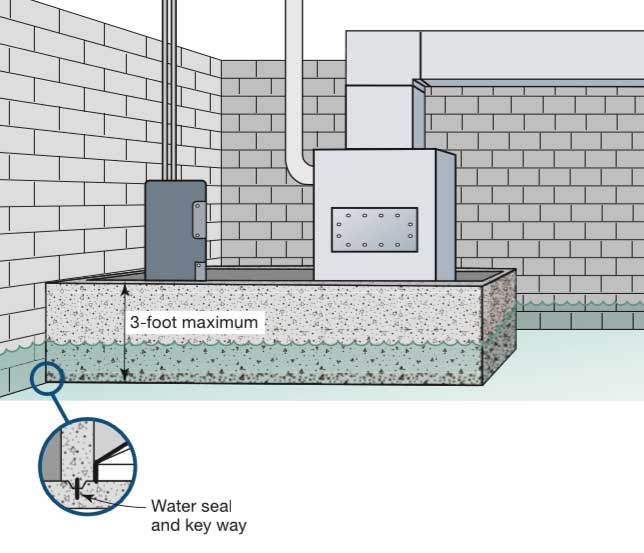Wet floodproofing can be defined as permanent or contingent measures applied to a structure and/or its contents that prevent or provide resistance to damage from flooding by allowing floodwater to enter the structure. The basic characteristic that distinguishes wet floodproofing from dry floodproofing is that it allows internal flooding of a structure as opposed to providing essentially watertight protection.
Flooding of a structure’s interior is intended to counteract hydrostatic pressure on the walls, floors, and supports of the structure by equalizing interior and exterior water levels during a flood. Inundation also reduces the danger of buoyancy from hydrostatic uplift forces. Such measures may require alteration of a structure’s design and construction, use of flood-resistant materials, adjustment of building operations and maintenance procedures, relocation and modification of equipment and contents, and emergency preparedness for actions that require human intervention.
This course is based on the FEMA publication, Engineering Principles and Practices for Retrofitting Flood-Prone Residential Structures, Chapter 5 Wet Floodproofing. The techniques and methodologies described in this course document are applicable to most areas in the United States.
This course includes a multiple-choice quiz at the end and is intended to provide 2 hours of professional development.
Course Author: Federal Emergency Management Agency (FEMA)
LEARNING OBJECTIVES
At the conclusion of this course, the student will have learned or been exposed to the following:
• The basic principles of protecting a structure from flooding;
• Using the design flood elevation (DFE) in floodproofing design;
• Designing openings for intentional flooding of enclosed areas below the DFE;
• The use of flood-resistant materials;
• The adjustment of building operations and maintenance procedures
• The need for emergency preparedness for actions requiring human intervention



